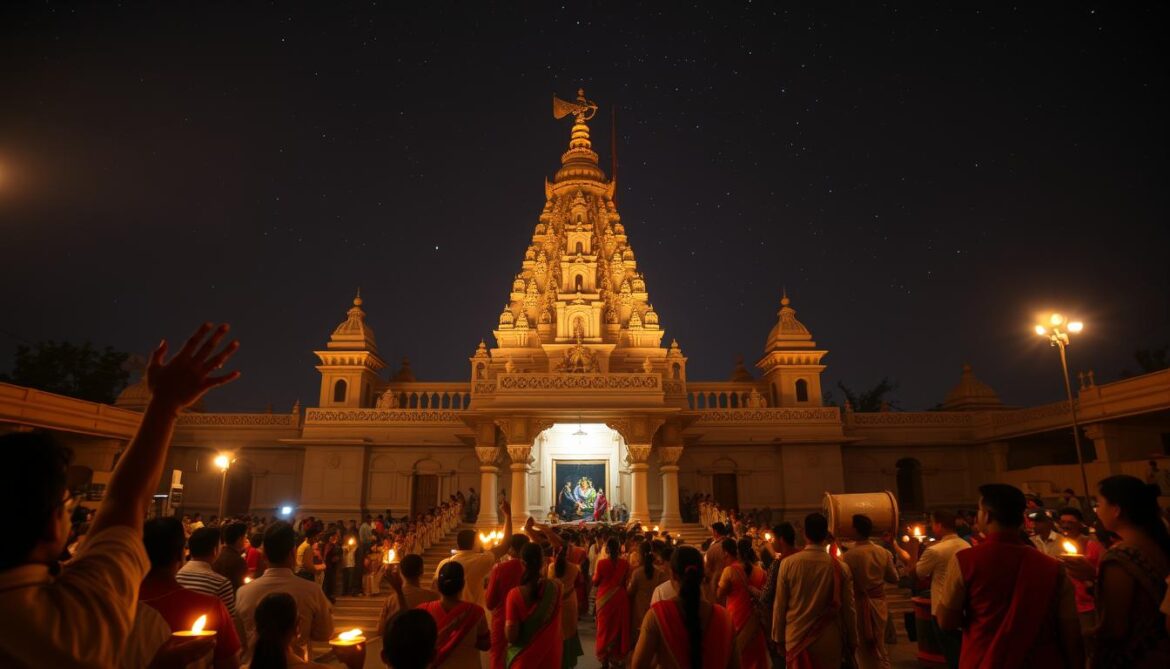Shivratri stands as one of Hinduism’s most profound celebrations, blending ancient traditions with deep spiritual meaning. It honors Lord Shiva, the cosmic dancer and symbol of transformation. Devotees observe fasting, meditation, and night-long prayers to connect with divine energy.
Beyond rituals, this festival represents a journey toward inner awakening. Modern thinkers like Swami Chinmayananda link its themes to mental renewal and environmental balance. The occasion reminds people of life’s cyclical nature and the power of stillness.
Scientists find parallels between Shiva’s symbolism and cosmic concepts like black holes. The festival bridges ancient wisdom and contemporary understanding of existence. Each year, millions celebrate this moment of reflection and renewal.
This article explores the deeper layers behind the celebration. From philosophy to science, discover how Shivratri remains relevant in today’s fast-paced world.
Introduction to Shivratri: A Night of Divine Awakening
When darkness stretches across the sky, Shivratri emerges as a sacred night of cosmic connection. This festival, observed in Phalguna (February–March), aligns with nature’s cycle of renewal. Devotees see it as a time to honor Shiva’s role in creation and dissolution.
The Origins and Cultural Importance of Shivratri
Traced to Vedic texts, Shivratri celebrates Shiva’s cosmic dance—the rhythm that birthed reality. The darkness of this moonless night symbolizes formless Brahman, the ultimate truth in Vedanta. Legends like Samudra Manthan highlight Shiva’s sacrifice, where he drank poison to protect the universe.
Why Shivratri is Celebrated on the Darkest Night
The absence of moonlight mirrors the infinite void Shiva embodies. Modern thinkers like Swami Chinmayananda compare this darkness to mental clutter—clearing it reveals inner light. Scientists note parallels between Shiva’s energy and cosmic phenomena like black holes.
This night isn’t just about rituals; it’s a call to stillness. By embracing the time when light seems absent, devotees awaken to the universe’s hidden harmony.
The Profound Significance of Shivratri
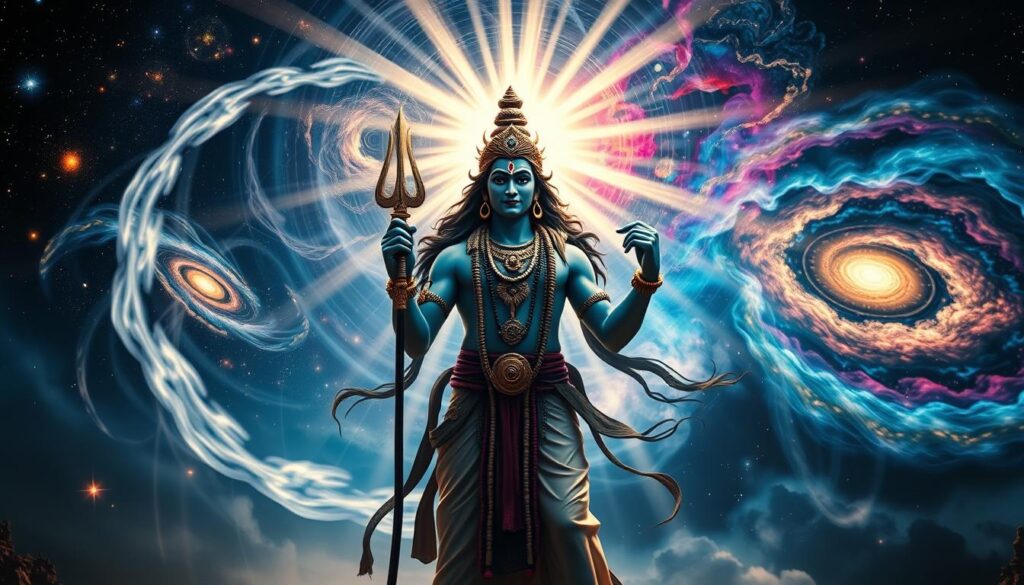
At its core, Shivratri represents the dance of energy that shapes existence. This festival unveils layers of meaning, from cosmic principles to inner awakening. Here’s how ancient wisdom and modern science converge in its observance.
Shiva as the Embodiment of Cosmic Nothingness
Shiva’s formless nature mirrors the quantum vacuum—a space teeming with potential energy. Quantum physics reveals that what appears empty pulses with invisible activity, much like Shiva’s silent meditative state.
Einstein’s theory of energy conservation finds echoes here. Shiva transforms poison into nectar, showing how destruction fuels creation. The lingam’s elliptical shape reflects planetary orbits, bridging myth and astronomy.
The Union of Shiva and Shakti: Balance in Creation
Ardhanarishvara, the half-male, half-female form, symbolizes oneness. Matter (Shakti) and consciousness (Shiva) intertwine to sustain the universe. This equilibrium inspires ecological harmony and gender equality in modern interpretations.
Modern Science and the Shiva Principle
CERN’s Shiva statue nods to particle physics, where collisions mimic cosmic cycles. Research shows meditation during Shivratri amplifies focus, aligning with Gurudev’s teachings on non-dual consciousness.
The festival’s timing—during planetary alignment—enhances spiritual receptivity. It’s a reminder that the universe operates in rhythms deeper than everyday perception.
Symbolism and Cosmic Connections
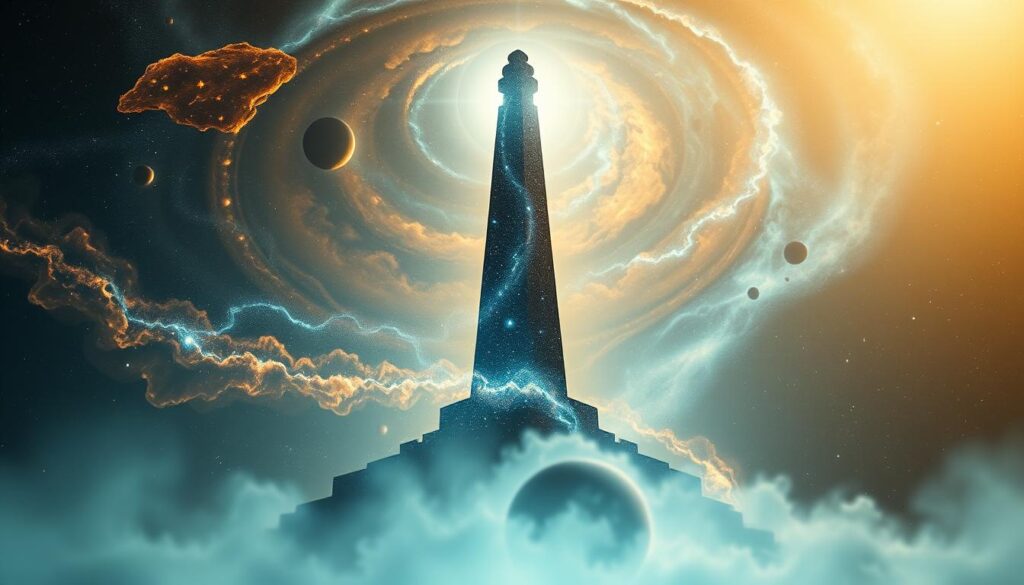
The night of Shivratri isn’t just sacred—it’s a mirror reflecting the cosmos. Its symbols, from the linga to the bel leaf, encode truths about the universe and the soul. Here’s how darkness and form intertwine to reveal Shiva’s wisdom.
Darkness as the All-Pervading Divine
In the West, darkness often symbolizes fear. In Shiva’s world, it’s the womb of creation. The moonless night represents Brahman—the formless divine that births galaxies.
Stargazing rituals during Shivratri highlight this. Constellations mirror the microcosm within us, linking inner stillness to cosmic infinity.
The Shiva Linga: A Symbol of the Universe
The linga’s three parts—Brahma (base), Vishnu (middle), Shiva (top)—map the universe’s cycle. Its elliptical base mirrors planetary orbits, a hidden structure supporting visible reality.
Modern physics echoes this: quantum vacuums pulse with potential, much like the linga’s silent energy.
Night as a Metaphor for Inner Stillness
Staying awake through the night mimics samadhi—the ego’s dissolution into pure awareness. Just as darkness hides the stars, chaos obscures the soul’s light.
Bel leaf offerings deepen this metaphor. Their three petals represent surrendering the three gunas (traits) to touch Shiva’s stillness.
Rituals and Celebrations of Mahashivratri
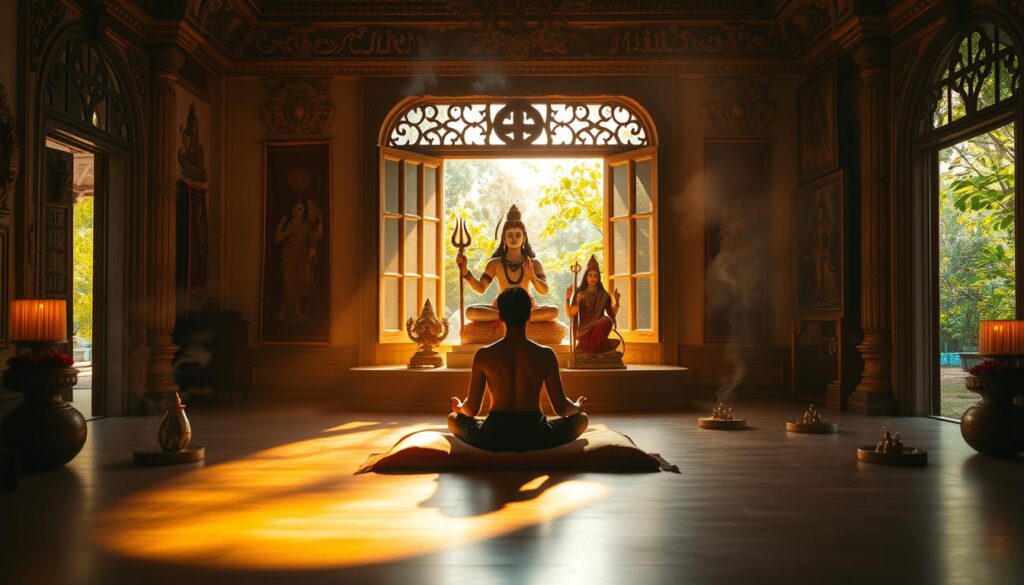
Mahashivratri transforms homes and temples into hubs of sacred energy through time-honored rituals. Each practice, from fasting to chanting, aligns the body and mind with cosmic rhythms. These traditions turn the day into a journey of purification and connection.
Fasting and Vigil: Purifying Body and Mind
The 24-hour fast detoxifies cells by triggering autophagy, a process where the body clears damaged components. Staying awake through the night mirrors Shiva’s eternal awareness. Research links this vigil to heightened theta brain waves, deepening meditation states.
Offerings to the Shiva Linga and Their Meanings
Devotees present milk (purification), honey (devotion), and bilva leaves (surrender of ego). Bilva’s trifoliate shape symbolizes harmony—a core yoga principle. Ayurveda values these leaves for their healing properties, tying ritual to physical wellness.
Chanting and Meditation: Harnessing 100x Power
The Om Namah Shivaya mantra vibrates at 7.83 Hz, matching Earth’s resonance. This frequency calms the mind, enhancing meditation. The damaru drum’s rhythm synchronizes brain hemispheres, while the Shiva Tandava Stotram’s verses align with cosmic cycles.
- Four Prahars: Night divided into quarters, each amplifying prayers for prosperity, wisdom, and liberation.
- Bilva Archana: Offering 108 leaves represents shedding life’s distractions.
- All-Night Practice: Boosts focus, per studies on sustained meditation.
Philosophical Insights from Vedanta
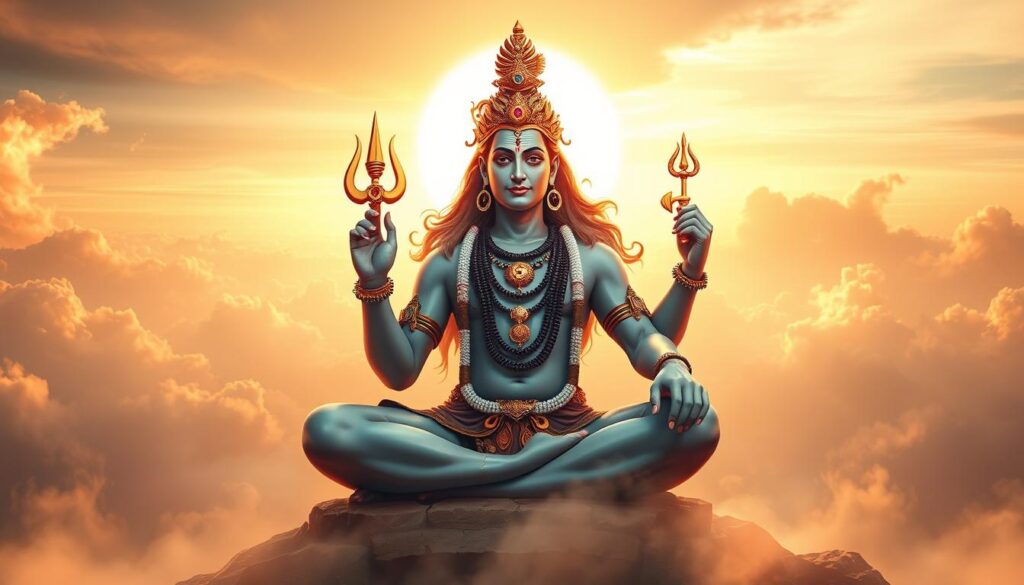
Vedanta philosophy reveals Shiva as the bridge between form and formlessness. This ancient wisdom unpacks how rituals translate into universal truths. Here, Shiva becomes a mirror for understanding the self and the cosmos.
Shiva as Brahman: The Ultimate Reality
Advaita Vedanta sees Shiva as Nirguna Brahman—the attribute-less absolute. Unlike Saguna forms (like Nataraja), this aspect embodies pure existence. The Shiva Purana compares Maya’s illusions to fleeting shadows on water.
Adi Shankara’s Shiva Manasa Puja teaches mental worship. It strips away external rituals, pointing to inner stillness. Modern physics echoes this: quantum fields underlie visible world, much like Brahman’s hidden unity.
Dissolving the Ego for Liberation (Moksha)
Kundalini yoga metaphors describe ego dissolution as energy rising through chakras. Swami Chinmayananda likens vasanas (impressions) to ash—cleansed by Shiva’s fire. Key practices include:
- Bhasma application: Smearing ash symbolizes shedding attachments.
- Om Namah Shivaya: Chanting aligns the self with cosmic rhythm.
- All-night vigil: Represents burning past karmas.
The Oneness of Existence in Shiva Consciousness
The Shivoham mantra (“I am Shiva”) declares non-dual oneness. Neuroscience studies show such affirmations activate brain regions linked to unity experiences. Shiva’s dance becomes the dance of atoms—each movement reflecting interconnected existence.
In this light, Shivratri isn’t just a festival. It’s a laboratory for transcending the ego and touching infinity.
Embracing the Shiva Within
Shiva’s wisdom extends beyond temples into daily life, offering a path to inner strength. Gurudev’s teaching—“We forget this power within us”—reminds seekers that divinity isn’t distant. It’s an experience woven into breath, choices, and stillness.
Surrendering to Shiva mirrors quantum entanglement: letting go unlocks hidden power. Swami Chinmayananda saw destruction as a step toward perfection—like pruning a tree for new growth. This awakening reshapes relationships, careers, and self-awareness.
Corporate leaders apply Shiva’s balance—decisive yet detached. A 10-minute nightly meditation becomes the way to access inner Mount Kailash. Visualize breath as the Ganges, flowing through chakras to dissolve stress.
Finally, Shiva’s dance echoes in nature’s cycles. Protecting forests and rivers honors his life-sustaining power. True celebration lies in embodying his consciousness—where every action sparks awakening.

